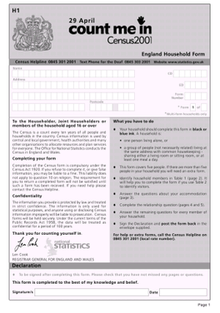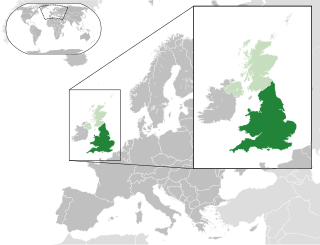
According to the 2011 census, the total population of the United Kingdom was around 63,182,000. It is the 21st-most populated country in the world. Its overall population density is 259 people per square kilometre, with England having a significantly higher population density than Wales, Scotland and Northern Ireland. Almost one-third of the population lives in England's southeast, which is predominantly urban and suburban, with about 9 million in the capital city of London, the population density of which is just over 5,200 per square kilometre.

Demographics of Wales include the numbers in population, place of birth, age, ethnicity, religion, and number of marriages in Wales.
Anglo-Celtic Australians are Australians whose ancestors originate wholly or partially in the countries of England, Wales, Scotland and Ireland.
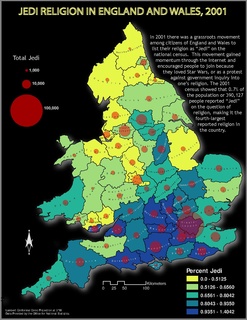
The Jedi census phenomenon is a grassroots movement that was initiated in 2001 for residents of a number of English-speaking countries, urging them to record their religion as "Jedi" or "Jedi Knight" on the national census.
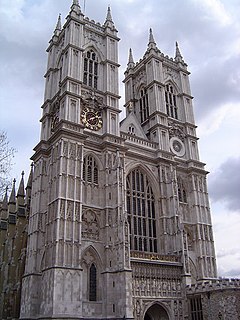
Religion in the United Kingdom, and in the countries that preceded it, has been dominated for over 1,000 years by various forms of Christianity. Religious affiliations of United Kingdom citizens are recorded by regular surveys, the four major ones being the national decennial census, the Labour Force Survey, the British Social Attitudes survey and the European Social Survey.

The Welsh are a Celtic nation and ethnic group native to, or otherwise associated with, Wales, Welsh culture, Welsh history and the Welsh language. Wales is a country that is part of the United Kingdom, and the majority of people living in Wales are British citizens.
White British is an ethnicity classification used in the 2011 United Kingdom Census. In the 2011 census, the White British population was 51,736,290, 81.9% of the UK total population.

The Census (Amendment) Act 2000 and Census (Amendment) (Scotland) Act 2000 are acts of the Parliaments of the United Kingdom and Scotland, respectively. They introduced a question on the religion of respondents to the censuses of Great Britain.

A nationwide census, commonly known as Census 1991, was conducted in the United Kingdom on Sunday 21 April 1991. This was the 19th UK census.
A number of different systems of classification of ethnicity in the United Kingdom exist. These schemata have been the subject of debate, including about the nature of ethnicity, how or whether it can be categorised, and the relationship between ethnicity, race, and nationality.

Buddhism in the United Kingdom has a small but growing number of supporters which, according to a Buddhist organisation, is mainly because of the result of conversion. In the UK census for 2011, there were about 178,000 people who registered their religion as Buddhism, and about 174,000 who cited religions other than Christianity, Buddhism, Hinduism, Judaism, Islam, Jainism and Sikhism. This latter figure is likely to include some people who follow the traditional Chinese mixture of religions including Buddhism.
The term Other White is a classification of ethnicity in the United Kingdom and has been used in documents such as the 2011 UK Census to describe people who self-identify as white persons who are not of the English, Welsh, Scottish or Irish ethnic groupings. The category does not comprise a single ethnic group but is instead a method of identification for white people who are not represented by other white census categories. This means that the Other White group contains a diverse collection of people with different countries of birth, languages and religions. Along with White British and White Irish, the category does not appear in Northern Ireland, where only one single "White" classification was presented to respondents.

The Neo-pagan movement in the United Kingdom is primarily represented by Wicca and Witchcraft religions, Druidry, and Heathenry. According to the 2011 UK Census, there are roughly 53,172 people who identify as Pagan in England, and 3,448 in Wales, as well as 11,026 Wiccans in England and 740 in Wales.
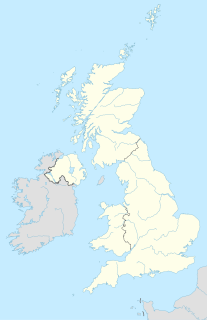
The United Kingdom (UK) comprises four countries: England, Scotland and Wales and Northern Ireland.

Northern Ireland is the smallest of the four components of the United Kingdom in terms of both area and population, containing 2.9% of the total population and 5.7% of the total area of the United Kingdom. It is the smaller of the two political entities on the island of Ireland by area and population, the other being the Republic of Ireland, a sovereign state independent of the United Kingdom since 1921. Northern Ireland contains 28.3% of the total population and 16.75% of the total area of the island of Ireland.

The English people are a nation and an ethnic group native to England who speak the English language. The English identity is of early medieval origin, when they were known in Old English as the Angelcynn. Their ethnonym is derived from the Angles, one of the Germanic peoples who migrated to Great Britain around the 5th century AD. England is one of the countries of the United Kingdom, and the majority of people living there are British citizens.
Nepalese in the United Kingdom are British citizens or full-time residents of the United Kingdom whose ethnic origins lie fully or partially in Nepal.

A census of the population of the United Kingdom is taken every ten years. The 2011 census was held in all countries of the UK on 27 March 2011. It was the first UK census which could be completed online via the Internet. The Office for National Statistics (ONS) is responsible for the census in England and Wales, the General Register Office for Scotland (GROS) is responsible for the census in Scotland, and the Northern Ireland Statistics and Research Agency (NISRA) is responsible for the census in Northern Ireland.
Cornwall is a unitary authority and ceremonial county of England, in the United Kingdom. At the 2011 census it had a population of 536,000. Cornwall is the homeland of the Cornish people and many within Cornwall identify with a Cornish ethnic or national identity, although due to Cornwall's political status as part of England, the United Kingdom and the European Union, as well as in-migration from other parts of the UK and EU, additional identities such as English, British and European may also be adopted.

